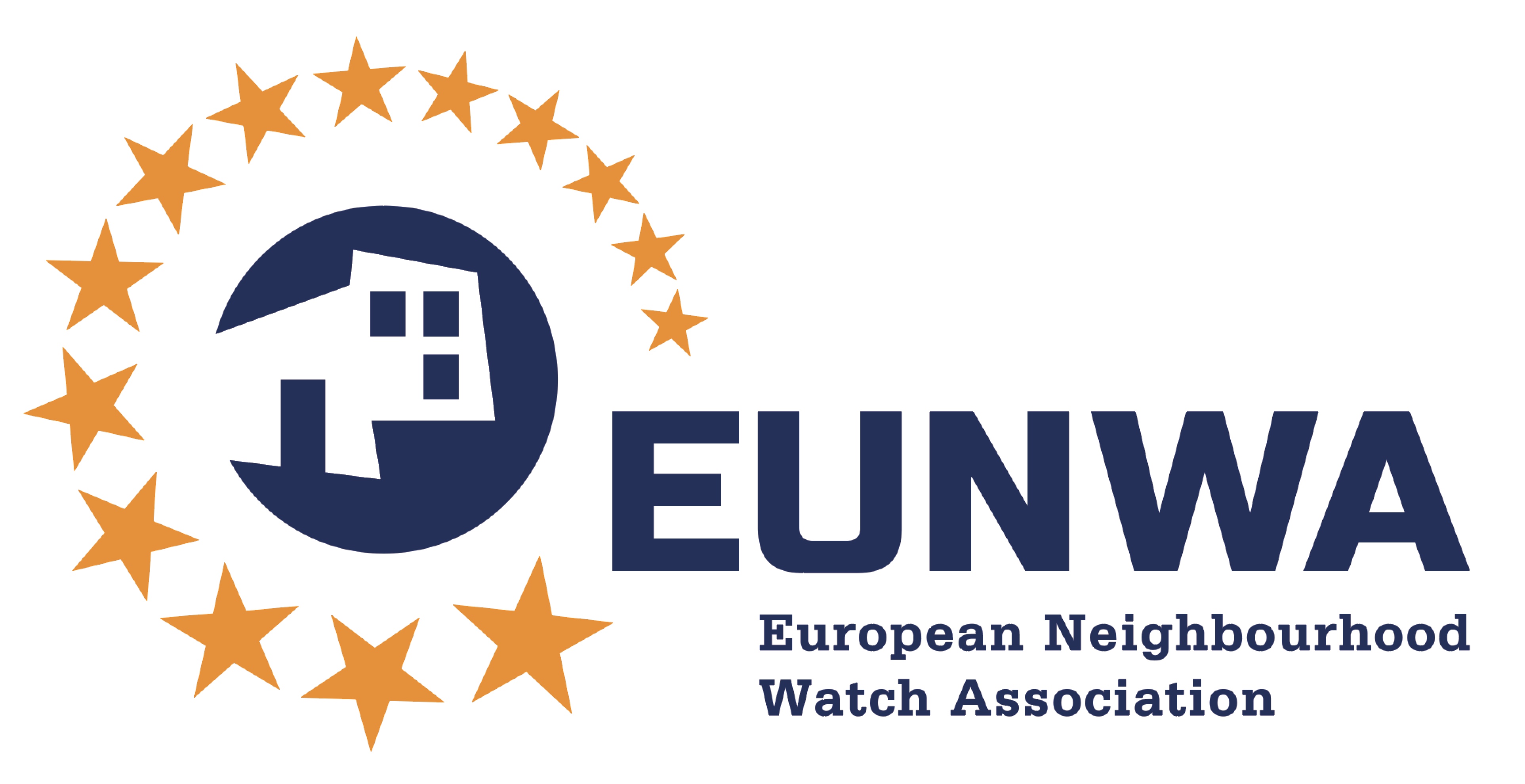
STUDIES & RESEARCH (8)
Crises such as hybrid threats, armed conflicts, natural disasters, pandemics, and economic turmoil frequently pose significant challenges to the protection of human rights. In these circumstances, states and the international community must ensure that fundamental freedoms and rights remain safeguarded—even when drastic measures become necessary.
When thinking about human rights in times of crisis, many are reminded of the saying, “Those who are drowning must save themselves.” Yet we should remember that the cornerstone here is each individual’s right to be protected by the state. So just how far or close are we to that ideal when it comes to receiving state support in critical moments? And what specific situations and crises are we talking about?
Human Rights Protection During War and Armed Conflicts
Armed conflicts pose one of the greatest threats to human rights and to adherence to humanitarian law, often involving war crimes and mass refugee flows. International humanitarian law, including the Geneva Conventions, mandates the protection of civilians and prisoners of war. However, many governments and armed groups disregard these principles, leading to large-scale rights violations. Sadly, this is still happening in the 21st century, including in Europe. There are reports of deliberate attacks on civilians, a failure to aid the wounded and sick, shortages or complete lack of first-aid supplies, and other abuses targeting the local population.
Natural Disasters and Pandemics
Natural disasters like earthquakes, floods, and hurricanes can force people to relocate, overwhelm healthcare systems, and cause food shortages. In such situations, human rights include ensuring people’s access to basic needs, as well as imposing on the state a duty to provide information and take effective action.
Pandemics like COVID-19 have shown how difficult it is to balance the protection of public health with individual freedoms. The restrictions on movement we experienced had a considerable impact on both economic and social rights. Human rights advocates and influential public figures have questioned whether health and the right to life should have justified such sweeping limits on freedom of movement and assembly. In many places—especially authoritarian regimes—these measures opened the door to further human rights restrictions, including unmerited tracking of personal data such as people’s habits and movements.
A Fundamental Need: The Right to Health and Healthcare
In all of the scenarios noted above, access to sustainable healthcare is an essential requirement. The right to health is a key human right protected by various international agreements, including the European Convention on Human Rights and Fundamental Freedoms, as well as Article 111 of Latvia’s Constitution. It is the government’s responsibility to strengthen support mechanisms and ensure that people have access to medical care and medications—even in emergencies.
Adequate access to medicines and healthcare services is vital for public health. International law obligates governments to guarantee people’s access to necessary medicines, vaccines, and medical treatment, including state-funded care for vulnerable groups. But are we in Latvia really prepared to confront potential challenges?
It seems absurd that more and more people are afraid to call an ambulance for fear of a hefty bill. It is equally troubling that healthcare professionals feel underfunded and underappreciated. Although efforts have been made to explain the situation, public concern remains high. Doctors and nurses continue to complain about low pay and insufficient social protections.
During the pandemic, several countries introduced emergency measures to keep healthcare accessible for everyone. Experts, however, have debated just how well these measures worked. Providing equal treatment and equal access is no simple task, especially given many individuals’ unique circumstances. Keeping the public safe while protecting vulnerable groups—children, seniors, and those with chronic conditions who may lack financial reserves—is a complex endeavour. To do this effectively, it is not enough to rely on past experience; proactive planning for different crisis scenarios is needed.
Such crises often exacerbate existing inequalities and discrimination, limiting people’s access to work, education, and healthcare. Governments need to put support systems in place to protect those who are most at risk, since the treatment of vulnerable groups reveals how fragile society is as a whole. In Latvia, we have long discussed unequal access to goods and services, particularly in rural regions and remote areas. Lately, there has also been growing focus on pharmacy availability in both urban and rural settings, as well as on maintaining adequate reserves of essential medicines for crisis situations. Certified pharmacist Zane Dzirkale, a co-founder of the “Health Care System Resilience” think tank, addressed these issues in a recent publication.
Potential Solutions
When we talk about “the state,” we are also talking about every one of us—each playing our role and fulfilling our responsibilities. Yet recent years have shown the significant power of communities and civic organizations, including community centres and service hubs in towns and cities. We have no shortage of good practices in this realm. For instance, the Latvian Platform for Development Cooperation responded rapidly to Ukraine’s need for assistance; there are also inspiring examples of local community collaboration both in Latvia’s regions and in Riga. Support for Ukraine is ongoing, provided by the Marta Centre, the association “Tavi draugi,” and numerous other civic organizations. Crises have shown that the potential of communities is undervalued—even though the need for community engagement continues to grow.
Community strength is also reflected in the concept of community policing, where maintaining public order is not left solely to the police; residents, too, share responsibility. Community policing is built on trust, prevention, and more efficient crime reduction—rather than merely responding after the fact, the police work hand in hand with residents to solve problems at the neighbourhood level. Recall how a local resident in Latgale discovered a drone, alerted the local police unit, and set in motion a response well before the media picked up the story. This community-focused approach has proven successful elsewhere in the European Union and has become an integral part of Latvia’s State Police strategy.
Conclusions
Protecting human rights—especially the right to life and health—in times of crisis is one of the greatest challenges facing the modern world. The international community, national governments, and nongovernmental organizations must coordinate to ensure these rights remain intact, no matter how severe the crisis. Sustainable and effective healthcare policies can greatly enhance people’s living conditions and foster societal stability and resilience—offering protection for individuals’ health and lives. Equally important is the support of communities and NGOs, both in normal times and during periods of crisis.
Ilze Bērziņa
EUNWA Advisory Board, and co-founder of the think tank “Health Care System Resilience”; human rights expert, and lecturer at the Rīga Stradiņš University Faculty of Social Sciences.
References:
The relationship between young people and law enforcement is a dynamic and evolving issue, shaped by history, societal challenges, and emerging strategies aimed at building trust and cooperation. While tensions have existed for decades, there is growing momentum toward fostering understanding and collaboration between these two groups. This article explores the complexities of their relationship, examining past obstacles, modern influences, and potential solutions for a more constructive future.
Historically, interactions between youth and law enforcement have often been fraught with tension. Many young people perceive law enforcement as disconnected from their lived experiences, a sentiment fuelled by past incidents, media representations, and broader systemic issues. This distrust is particularly pronounced in marginalized communities, where economic and racial disparities have exacerbated feelings of alienation. However, societal progress has led to shifting expectations for both youth and law enforcement. Communities and police departments alike recognize the need for change, seeking ways to bridge the divide through engagement and reform.
In today’s digital world, information spreads rapidly, shaping public perception almost instantly. Social media platforms amplify both positive interactions and moments of misconduct, creating a complex landscape where law enforcement is scrutinized in real time. Viral incidents of excessive force have intensified scepticism, particularly among young people who are highly engaged in digital activism and civic movements. At the same time, these platforms provide opportunities for law enforcement agencies to foster transparency and open communication. Many departments are now embracing digital outreach to engage with the public, share success stories, and clarify policies in an effort to rebuild trust.
Recognizing the urgent need for stronger relationships, many national police forces across Europe and beyond are adopting community policing strategies. These approaches emphasize direct engagement in several ways. For instance, educational programs help teach young people about civic responsibility, the legal system, and conflict resolution, equipping them with the knowledge to better understand the role of law enforcement in their communities. Public forums provide a space for open and honest discussions, allowing youth and police officers to share their perspectives and build mutual understanding. Additionally, mentorship initiatives are proving to be effective in strengthening bonds, as they foster personal connections between officers and young individuals, humanizing both sides of the equation. Lastly, youth advisory boards give young people a platform to voice their concerns and actively participate in discussions on policies that directly impact them. These efforts shift policing from a purely enforcement-driven model to a collaborative approach, humanizing officers and making young people feel heard and valued.
While law enforcement must evolve, young people also play a crucial role in fostering a better relationship. Education and engagement initiatives empower youth to take an active part in their communities, promoting safety, accountability, and positive interactions. Encouraging youth participation in community initiatives, local governance, and law enforcement discussions can help reshape perceptions and policies from the ground up.
Legislators and civic leaders are increasingly prioritizing community-based solutions. Reforms aimed at improving transparency, accountability, and community-oriented practices are gaining traction. Initiatives such as neighbourhood policing programs and youth advisory councils are proving to be effective bridges between law enforcement and young citizens. Moreover, addressing mental health challenges—both among officers and within communities—has become a critical aspect of modern policing. Training officers in de-escalation techniques and integrating mental health professionals into law enforcement practices help reduce conflicts and promote a more supportive environment for youth.
The journey toward strengthening the relationship between youth and law enforcement is ongoing. Building mutual trust requires commitment, policy reform, and continuous dialogue. By embracing comprehensive education, community engagement, and mental health awareness, both parties can work toward a future rooted in respect, cooperation, and shared responsibility. Investing in these initiatives today lays the foundation for a safer, more inclusive society tomorrow—one where young people grow into engaged citizens, and law enforcement officers serve as trusted protectors and community partners. By acknowledging past challenges and working toward meaningful change, we can create an environment where youth and police succeed together.
EUNWA Board
100 days of war between Russia and Ukraine, 4100 civilians dead including 260 children. 5000 injured. 6.8 million Ukrainian refugees.
810 days of Covid19 and its variants, 528,275,339 confirmed cases worldwide of which 6,293,4214 died.
We have been taught that the time of a crisis does not exist in terms of uniformity and timeline, because in a crisis, time becomes the beating of useful actions to contain the damage and make people and territories safe again. Actions are taken with immediacy, between the occurrence of the early signals and the manifestation of the critical episode. Actions then follow one another, in order of priority, in an authentic flow of acts and communications that can no longer and must not be stopped, just like those mountain fountains in which water gushes out spontaneously without being artificially extracted.
The time of the crisis is not scheduled on the timeline because, if it was possible, actions would be performed in concert, all in unison: I manage the consequences, I support the people and areas affected, I search for the causes and contain any reputational damage. All together. Since simultaneity cannot be managed, actions are performed according to strict priority logic. The episode that generates the crisis or catastrophe, even when it causes long-term damage, is normally short and intense: an accident, a flood, an earthquake, a fire, a bankruptcy, a bereavement...
But these 100 days of war, added to the 700 of the pandemic, clearly suggest that one of the 'new elements' to be understood and managed is time. That time that has changed us and will never make us the same again.
The ancient Greeks already taught us that the perception of time changes and that objective and subjective time do not coincide. In extremely dangerous situations, time slows down and moments become eternal. This distortion is created by our memory because more critical events generate more memories and therefore the mind perceives a longer time. To the effects on memory and emotions, fatigue must be added. A fatigue which comes suddenly and that brings with it a progressive and understandable indifference. The number of articles and reports devoted to the war has decreased eightfold since the beginning of the conflict, and interactions on social media have dropped from 109 million to 4.8 million. Levels of attention and concentration on risks and consequences have declined, and clocks continue to record the simple passage of time trying to shift and neutralise, on the symbolic horizontal line, the sinusoidal curve with its alternating sharp peaks.
Time has become part of the crisis too: an off-stage voice, but an undisputed protagonist that, once again, forces us to face fatigue, since the risk of remaining defenceless and weakened in the desperate attempt to imagine a crisis coming to an end is too close and too dangerous. That is why, in the books we are going to write about the lessons we have learned, under the heading 'prompt and immediate reaction' we will also add 'danger of adapting to the level of risk', a new parameter that will have to be taken into great consideration, because indifference and fatigue are threats that leave open the risk that someone could always take advantage of the time factor.
Paola Guerra - Founder and Director of the International School of Ethics & Security Milan - L'Aquila
21 February 2020 - If we had been asked at the end of 2019 to assess the likelihood of a global pandemic, we would have said it was completely impossible.
24 February 2022 - We would have thought the same if we had been asked at the end of 2021 to evaluate the probability of a war breaking out in the middle of Europe.
Remote hypotheses, which we cannot imagine, cannot consider as possible...
It is true that imagining or thinking about emergencies and world crises instils anxiety, fear, and terror. It activates our operational centre in the amygdala, which 99% of the time causes automatic reactions of the autonomic nervous system, causing a great deal of fatigue, so it is better to rationalise, deny, and close our eyes to danger signals.
In this historical moment, it is our duty and responsibility to promote a culture of preparedness. Risks are certainly uncertain events, but emergencies and crises do occur. And this requires careful preparation before, during and after the crisis.
It is necessary to look at the unexpected and at those unpredictable events that can occur and break any equilibrium with focus, competence and skill.
So, what to do?
- Constantly monitor risks and possible emergencies or crises from authoritative and reliable sources
- Build possible scenarios (best case and worst case)
- Prepare the organisation and the “chain of command and control”
- Plan operational processes and actions
- Constantly monitor KPIs and “early signals”
- Activate decision-making processes
- Analyse effects and review actions
- Sit down together to evaluate the "lessons learned"
These are the foundations for creating high-reliability organisations, capable of creating a state of mindfulness, that is, full collective awareness that produces the widespread ability to analyse risks, identify hazards and react promptly when they occur.
A special emphasis, arising from the head and the heart, must be placed on People who experience stressor events in their everyday lives and who, for the last two years, have been living in a global pandemic and now have also to face war scenarios. There are many people who feel destabilised, confused, frightened. We have come face to face with war already being in a situation of psychological exhaustion, and this makes it difficult to cope with this other emergency. People must therefore be listened to and supported in dealing with destabilising thoughts, feelings, and emotions. They must be helped to cultivate well-being, which is the ability to balance the negative and positive aspects of life.
The challenge is therefore to make it a priority for every family, organisation, and company to be aware of the importance of being ready and reliable organisations, that is, aware and prepared to face life in its moments of stability and instability. Only in this way there may be evolution and growth!
Paola Guerra - Founder and Director of the International School of Ethics & Security Milan - L'Aquila
Visit the web site of International School of Ethics & Security Milan - L'Aquila
As reported by Prof. Battistelli in 20131 , "from the 80s of the twentieth century a significant change in the concept of safety has taken place. The traditional concept of public safety has turned into the more specific notion of urban security. However, the question arises as to whether the new definition can be considered a replacement for the previous one: it certainly constitutes a radical extension. In itself, in fact, urban security includes the 'necessary' characteristics of public safety but, at the same time, it includes more specific characteristics".
The paradigm of urban security promises to pursue the development of the opportunities and the rights of most of the people that are part of it (in some cases even non-native). Urban security includes not only the protection of a society from threats, but also the satisfaction of its most advanced needs, extending the realisation of this objective to both private and public agencies (Battistelli 2013). Private agencies, consequently, seek to settle themselves into a new area of society with the aim of privately performing protection and security functions while maintaining a very strong link with public authorities (e.g., law enforcement, ministries).
In this regard, Italy has always maintained a prudential attitude towards the sharing of any data on crime, making it the exclusive prerogative of the Public Security Authorities. Centro Elaborazione Dati Interforze (CED)2 is part of this framework. Instituted by Article 8 of Law /1/4/1981, no. 121 for the purpose of coordinating the collection, classification, analysis, and evaluation of information on the protection of law and order, public security and the prevention and repression of crime (Art. 1, para 1, Legislative Decree 18/5/2018, no. 51), it was subsequently incorporated in 2001 within the new Sistema Di Indagine (SDI)3 platform. The latter is, to all intents and purposes, the largest public database (on crime, offences, and urban decay) in Italy to date.
The SDI platform is constantly enriched with a great deal of data relating to unlawful episodes, potential offenders, subjects, persons, property and much more. In other words, 'quantitative' information is integrated (e.g. geographical distribution of criminal events, episodes of urban decay and offences) with 'qualitative' information4.
Within this enormous database (SDI) also the geo-localized5 data on episodes of crime, generated by the tabularization of the complaints received by the competent authorities, are naturally conveyed. This geo-referenced collection has a specific objective: to put the Police Forces in the condition of being able to carry out urban risk analyses finalized to the understanding of the principal critical areas on which to activate mitigating/contrasting/preventive actions. Such geo-localized data, if rendered devoid of any sensitive information, could have an undoubted value also for Associations, Third Sector Organisations, Foundations, private citizens, and companies, as part of the social fabric.
This is in line with the United Nations (2018)6 report on the urbanization processes that the world, especially the western world, will face by 2050. In fact, it is expected that 68% of the world's population will live in urban-metropolitan contexts, increasing the vertical and horizontal growth of our cities. Such densification will be accompanied by an unequally rapid increase in the number of the Police Forces involved in the control of the above-mentioned urban spaces. This gap will inevitably imply an increasing assumption of responsibility by all the stakeholders (public and private) of our society, who will become an integral part of the process in the field of 'participatory urban security'. In other words, each of us will be called upon to contribute so that cities can maintain adequate levels of safety, inclusion, and balance.
It is within this framework that one of the greatest challenges of the future will be played out, and in order not to lose it, it will be essential to focus on a radical change in the area of 'open data' on crime and urban decay. In fact, if this change doesn’t happen, how could public/private stakeholders identify streets or urban micro-areas where there may be 'pockets' of crime on which it is essential to intervene with operations of contrast, mitigation, and risk prevention? It would not be possible, or at least it would be extremely complex.
The idea of a synergy between the police, citizens, businesses, and any other stakeholder (part of the social structure) can concretely lead to tangible and measurable benefits. In these countries, in fact, the concept of 'open data' in the field of security (and not only) was legitimised years ago, making our country, unfortunately, still rather behind the standards across the border. For example, although updated in 2017, the Open Data Barometer7 relegated Italy to a less than optimal position in terms of open data in Europe (see Figure 1).
Fig. 1 - Data accessibility in Italy by category (year 2017) - comparison with UK

Comparing Italy to the UK for example, two countries that could be defined - on some level - at the extremes of the same spectrum, it emerges that in the field of crime data-transparency Italy presents an overall score (on a scale ranging from 0 to 100) of 40.00 against the UK's 90.00, here are some more specific numbers (see fig. 2):
- Open data on crime and decay: UK (90.00) VS Italy (40.00)
- Mapped data, WEB GIS: UK (100.00) VS Italy (50.00)
Fig. 2 - Comparison of open data between the UK and Italy (year 2017) - topic 'Crime Statistics'

In addition, there is a government platform called 'Open Data - Police UK8', through which any citizen/entity in the world can freely download all geo-localised crime data up to date (see figure 3).
Fig. 3 - Government platform 'Open Data - Police UK'

Continuing the comparison on an European level, Italy, compared to Germany, presents an overall score of 40.00 vs. 80.00, below some more specific numbers (see fig. 4):
- Open data on crime and degradation: Germany (80.00) VS Italy (40.00)
- Mapped data, WEB GIS: Germany (100.00) VS Italy (50.00)
Fig. 4 - Open data comparison between Germany and Italy (year 2017)

Again, Italy, compared to France, has an overall score of 40.00 versus 95.00, here are some more specific numbers (see fig. 5):
- Open data on Offences and Degradation: France (95.00) VS Italy (40.00)
- Mapped data, WEB GIS: France (70.00) VS Italy (50.00)
Fig. 5 - Open data comparison between France and Italy (year 2017)

In light of the above, a question arises: what kind of consequences can this difference generate directly, or indirectly?
The lack of accessible geo-localised data on urban crime means that many intervention policies (both private and public) are not yet data-driven on this issue but rely only and exclusively on qualitative variables (equally important but insufficient if not integrated with numerical-quantitative ones).
On the other hand, how could a Public Administration, a Foundation, an Association or even a group of aware and pro-active citizens plan an urban requalification intervention if the (geo-localised) data on episodes of crime and degradation are not accessible? Everything becomes extremely more complex and potentially ineffective, hence the need to overturn the paradigm of participatory urban security.
This change does not presuppose, obviously, an access to the entire data bank of the SDI, insofar as it is inapplicable, dangerous and, above all, ethically unjust (given the high presence of sensitive data and material). It is rather intended to mean the possibility for private citizens, companies, public administrations and all the organisations of the Third sector, to access only the geo-localized data (deprived of any sensitive information) on criminality and urban decay. Below is an example of 'information fields' that - although not affecting sensitive/personal data - could make a given crime/degradation event usable in urban risk analysis:
- Event category (e.g., robbery, theft, violent crime, counterfeiting, drug dealing, etc.)
- Sub-category of event (e.g., Commercial Robbery, Residential Theft, etc.)
- Date of event (e.g., 01/01/2021)
- Time of the event (e.g., between 8:00 and 12:00)
- Address (e.g., Via Rossi 1, 00000, Rome)
- Latitude and Longitude (fundamental for the geo-localization of the event)
Of course, along with a hypothetical greater sharing of data on crime and urban decay by the Public Safety Authorities, it is necessary to encourage an increasingly substantial activism on the part of citizens. The latter, in fact, are called upon to contribute with information and data which, unfortunately, are often not available to Law Enforcement Agencies.
In this regard, back in 20049, Dr Maurizio Fiasco - through an interesting article published on the State Police website - quoted "The average number of reported cases is 34% and is partly influenced by the fact that attempted crimes don’t get reported (only one in four is followed by a report to the authorities). While it may seem obvious that citizens report almost all car thefts (94%), the high percentage of robberies that remain unreported is cause for reflection: 50.4% of those committed and 68.9% of those attempted. Why such a low tendency? The hypotheses are based on the balance between the costs and benefits of contacting the police and the seriousness of the consequences of the crime. It is also influenced by whether contact between the perpetrator and the victim has taken place or not. A burglary committed while the victim is absent from home has different emotional repercussions from a robbery during which the offended party has run into the aggressor. In other words, in case of events affecting one individual, such as assaults and robberies, the most frequent motivation for reporting is to inform the police (43.2% if they met the offender and 35% if they didn’t) or to prevent the perpetrator from repeating the crime (50.3% if they met the offender and 17.3% if they didn’t). On the other hand, these motivations were scarcely reported for pickpocketing and theft of personal belongings.
This reflection, although outdated, is still deeply relevant considering what was pointed out in the ISTAT (Italian National Statistical Institute)10 year-end report 2020, that "The data concerning the police force survey do not represent a complete picture of crime". This aspect is, in some ways, extremely invalidating as it could prevent the Public Safety Authorities from implementing effective crime fighting and containment measures. However, even though the number of reports is still relatively low today (especially for certain types of crime), it must be said that citizens have been able to build a dense network of platforms, especially digital ones, capable of collecting very significant amounts of data on crime/degradation. In other words, it could be said that blogs/forums/social networks/security websites have become the digital noticeboard where citizens tend to crystallise the results of their HUMINT11 activities.
Therefore, it is evident that citizens are very willing to 'share information for the protection of common/public spaces', but it is also necessary to put them in a position where they can convey the same data to the competent authorities. Training, information, and dissemination activities can be an excellent tool to make citizens increasingly aware of the need to systematise the data/reports they collect in order to share them with the police, as well as to increasingly digitalise the reporting procedures. In this sense, the Mine Crime project that we coordinated aims to harmonise the collection of data reported through multiple digital platforms, systematising them in a single database and transforming them into risk indices to support mitigation activities by companies, law enforcement agencies, public stakeholders, and citizens.
In conclusion, it is only through the overall sharing of data, information, and useful materials on urban security that the public, by integrating with the private sector (an essential component of modern society), will be able to face the great challenges that the 'security of the near future' will inexorably pose to us. We have excellent examples of countries that could serve as models of 'good practices'. There is nothing left to do but start now.
Giacomo Salvanelli - Mine Crime CEO
[1] https://doi.org/10.4000/qds.425
[2] https://www.poliziadistato.it/articolo/banca-dati-per-le-forze-di-polizia-1
[3] https://www.carabinieri.it/media---comunicazione/rassegna-dell-arma/la-rassegna/anno-2012/n-1---gennaio-marzo/studi
[4] Criminal proceedings, secret or classified - Art. 144 and 329 - and, therefore, accessible only to Officials of the Judicial Police assigned to the "Services" of the Judicial Police provided for by Art. 56, Code of Criminal Procedure, to the D.I.A., to the Central Direction for the anti-drug services and to the central Offices of the State Police or of the Carabinieri deputized to fight terrorism.
[5] Geolocation: identification of the geographic position of people, events, vehicles or objects that are stationary or moving
[6] https://www.un.org/development/desa/en/news/population/2018-revision-of-world-urbanization-prospects.html
[7] https://opendatabarometer.org/?_year=2017&indicator=ODB
[9] https://poliziamoderna.poliziadistato.it/articolo/56c49118a17f6125389515
[10] https://www.istat.it/it/archivio/244848
[11] http://www.osservatorioanalitico.com/?p=8888
A new study by Motorola Solutions reveals trends related to Public Safety and Innovative Technology. The study in question, carried out by Dr. Chris Brauer of Goldsmiths, University of London, is called "Consensus for Change”: it involved 12,000 citizens, 50 public safety agencies, commercial organizations and experts from 10 countries. Areas of interest include Germany, Italy, Australia, UK, USA, Scandinavia, Spain, Malaysia, Singapore and Taiwan.
The International Reflection Group in cooperation with the Czech Institute of Criminology and Social Prevention organized a conference in Prague, April 11th to 13th 2018, at the Czech Criminological Institute, attended mainly by representatives from Sweden, the Czech Republic and Austria. The President of the European Neighborhood Watch Organization (EUNWA), Karl Brunnbauer, invited EUNWA members to participate.
International Scientific Conference
Next Generation Community Policing - Social Media and Smart Apps in the context of the Fight against Terrorism and Organized Crime
The International Scientific Conference “Next Generation Community Policing - NGCP International Conference Social Media and Smart Apps in the context of the Fight against Terrorism and Organized Crime” was successfully organized on the 25 - 27 October 2017, in Heraklion, Crete – Greece, with the support of the European Commission (EC).







